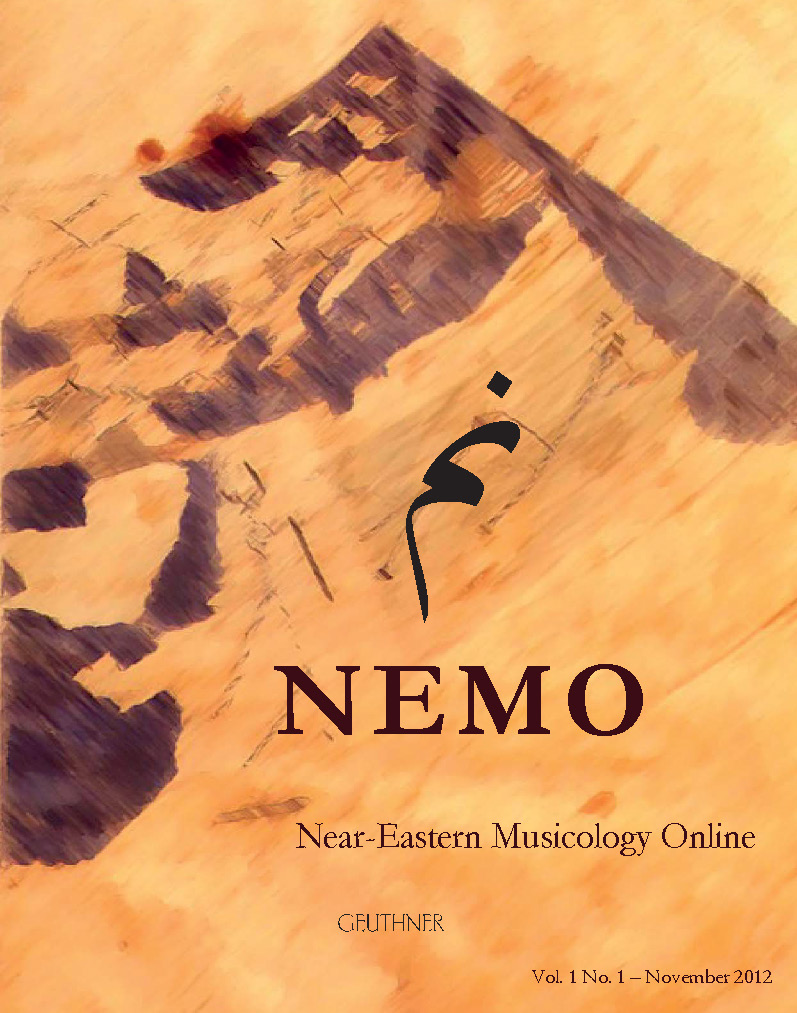English
[French translation below]
Research centres and groups CERMAA, ICONEA and IReMus are delighted to inform you that the main theme for number eight of NEMO-Online will be: Music as science or music as art? This question has brought up controversy for centuries. It seems useful to apprehend what is the current position of music and musicology about this conundrum.
Other themes are also proposed:
- The concepts and terminology of musicology and their evolution
- Variations on the linguistics of musicology. Have homophonic terms in various languages and different cultures the same meaning ?
- Collation of a multilingual lexicon taking these linguistic variations into account.
- Differing perceptions in different times and spaces for terms such as ‘heterophony’, ‘polyphony’, ‘monody’, or ‘diatonic’, ‘chromatic’, ‘enharmonic’, etc.?
- Difference between ‘law’ and ‘rule’
- Others
- Musicology in the Arabian World aside countries having an established musicological structure such as the Lebanon and Tunisia.
- Music and musicology in the Maghrib, countries of the Persian Gulf, Syria.
- Byzantine and related chanting, such as syriac, coptic, etc.
- Others
- Common practice of maqām
- The Mediterranean and the Balkans
- Turkic and Persian worlds
- Indian, Chinese and others
- Beyond the Western Mediterranean
Articles for this issue will be published according to their evaluation and layout for the internet. NEMO-Online No. 8 will collate articles published and in the course of editing and will be printed in November 2020 as part of the fifth volume (NEMO-Online Nos. 8 & 9).
Languages an rules : click here.
Please send proposals for articles to Richard Dumbrill (rdumbrill[[[]]]nemo-online.org) and Amine Beyhom (amine.beyhom[[[]]]nemo-online.org) before end of May 2019.
Deadline for papers: end of July 2019.
Additionally, the Editorial Board will consider special extraneous contributions as long as they fit within the general aim of the publication.
Previous volumes are available here. (Please note that Volume 4, Nos 6&7 is now available in print.) Individual papers are available from the Articles tab on the NEMO-Online site.
French
Les centres et groupes de recherches CERMAA, ICONEA et IReMus ont le plaisir d’annoncer le thème principal du no 8 de NEMO-Online : Musique en tant que science ou musique en tant qu’art ? Cette question soulève la controverse depuis des millénaires, et il semblerait utile de faire un état des lieux de la pensée musicologique et musicale à ce sujet.
D’autres thèmes sont proposés, sur le long terme, à partir de ce numéro et continueront de complémenter le thème principal :
- Les concepts et la terminologie de la musicologie et leur évolution historique :
- Variations linguistiques de la terminologie (les « mêmes » termes veulent-ils dire la même chose dans différentes langues ou différentes cultures ?)
- Établissement d’un lexique multilingue et/ou d’un dictionnaire critique de la musicologie prenant en compte ces variations
- Perceptions différentes dans le temps et l’espace de termes comme « hétérophonie », « polyphonie », « monodie », ou encore « diatonique », « chromatique », « enharmonique », etc. ?
- La différence entre « loi » et « règle » dans différentes langues et à différentes époques
- Autres
- Musicologie du Monde Arabe hors pays ayant des structures établies en musicologie (tels le Liban et la Tunisie) :
- Musique et musicologie du Maghreb, des pays du Golfe arabo-persique, de la Syrie
- Chant byzantin et dérivés, chant syriaque, chant copte, etc.
- Autres
- Tronc commun du maqām:
- Méditerranée et Balkans
- Mondes turcique et persan
- Affinités indiennes, chinoises ou autres
- Au-delà de la Méditerranée européenne
Les articles de ce numéro seront publiés au fur et à mesure de leur réception-évaluation-préparation pour la publication internet. NEMO-Online No 8 rassemblera les articles parus et en cours de parution et sera publié en novembre 2020, comme partie du Volume 5 (NEMO-Online Nos 8 & 9).
Langues et normes : voir ici.
Envoi des propositions d’articles à Richard Dumbrill (rdumbrill[[[]]]nemo-online.org) et Amine Beyhom (amine.beyhom[[[]]]nemo-online.org) avant : fin mai 2019.
Date limite d’envoi des articles : fin juillet 2019.
La rédaction acceptera également d’examiner des dossiers spéciaux ou des articles hors-thème, du moment qu’ils concernent la thématique générale de la revue.
Les volumes précédents sont disponibles ici, les articles individuels dans l’onglet Articles sur le site de NEMO-Online. Veuillez noter que le Volume 4, Nos 6&7 est désormais disponible en version imprimée.


